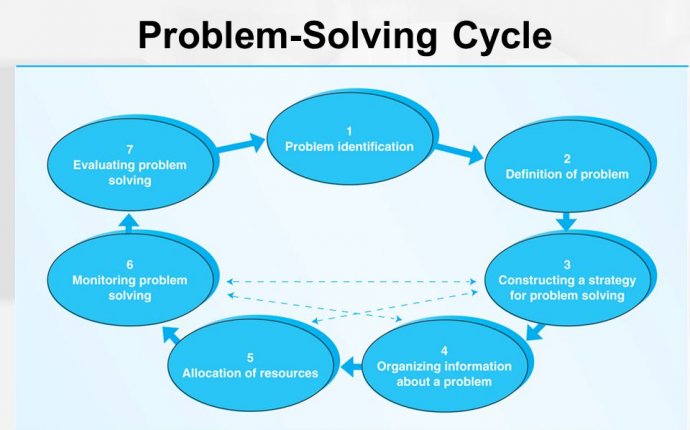
Problem-solving Psychology
 When I started my freelance career three years ago, the biggest difficulties I encountered were branding myself, attracting clients, and pricing myself to prospects. Nothing in my education or prior work experience had prepared me for these subtle little landmines. It was only by reflecting on my seat-of-the-pants successes and failures that I began to understand what I was getting wrong (and occasionally getting right).
When I started my freelance career three years ago, the biggest difficulties I encountered were branding myself, attracting clients, and pricing myself to prospects. Nothing in my education or prior work experience had prepared me for these subtle little landmines. It was only by reflecting on my seat-of-the-pants successes and failures that I began to understand what I was getting wrong (and occasionally getting right).
For the most part, I was acting as if clients were machines that existed outside of the realm of regular people. I thought somehow I could just win them over by using enough buzz lingo and dropping the right self-aggrandizing statements. But all that while, I didn’t even try to understand how they made their decisions or how I was really helping them.
Using problem-solving psychology was a breakthrough for me. When you take an analytical approach to your branding and outreach, your purpose and value become obvious to others and, importantly, to yourself. You stand out to potential clients, manage your projects effectively, and have the ammunition to get the compensation you’re due.
What is Problem-Solving Psychology?
The title is self-explanatory on some level, but most freelancers still seem to miss it. So let’s start with a definition.
In the marketing world, problem-solving psychology is understanding a client demographic’s unique issues and using these insights to better inform one’s marketing, branding, and sales strategies.
While it’s rarely the approach freelancers adopt from the start, problem-solving psychology is the difference between dumb luck and reliable success—it’s the secret sauce that makes your work and products shine in the company of a lot of middling competitors.
Let’s talk about why.
The Problem with “I’m Awesome (…I Think )” Psychology
Freelancers need to nurture a healthy love of self to survive the ups and downs of 1099 life. Confidence and self-worth are great assets and in some respects can be very attractive to clients. But if these are the only tools in your branding arsenal, you’re in trouble.
 “I’m awesome because I’m a design expert.”
“I’m awesome because I’m a design expert.”
“I’m awesome because I’ve written for 25 publications.”
“I’m awesome because I know seven coding languages.”
Sound familiar? If you’ve sent client outreach emails that sound a bit like this, what was your success rate? I’m willing to bet it wasn’t great.
In upholding our outward appearance of cool, collected confidence, many of us adopt what I call the “I’m Awesome” psychology. This approach fundamentally misunderstands how clients, and people in general, actually think when making a buying decision.
The “I’m Awesome” psychology may get you some work (it did for me initially), but it isn’t a long-term recipe for success. While what you’ve done does matter, it isn’t what any prospect cares the most about. Potential clients want to know specifically how you can help them and what your project amounts to as a return on their investment.
Getting Into Your Clients’ Headspace
Naturally, the first step to employing problem-solving psychology in your content and lead generation is to develop a clear sense of what your client profile really looks like.
Which industries and client personalities do you most enjoy working with? You need this to be crystal clear before proceeding. I found this clarity for myself by examining the handful of clients I had and pinpointing what I liked most about them. I discovered:
- I like working primarily with clients who also freelance.
- They tend to be in their mid-30s to late 40s.
- They often strive to do something a bit progressive in their respective industries.
- They’re open-minded and thoughtful.
- They want to learn.
This exercise allowed me to see what my clients’ overlapping big concerns were: Like start-ups, these clients were most worried about making their unique ventures sustainable or taking their operations to the next level.
This insight gave me the ability to speak to my ideal clients’ deepest needs. Sure, I can share my experience working in a couple of well-respected marketing agencies. But more importantly I can show prospects how my content strategy can help them get the traffic they need to hit their sales goals, about how long it will take, and what kind of ROI they can expect.
This is a lot more compelling than a bunch of “I’m awesome” opening lines.
Some other ways I’ve sharpened my understanding of my clients’ problems:
- Visiting Quora’s topic boards for my clients’ industries (what are the questions that come up most frequently?)
- Looking at the popular resources and content other freelancers are offering their clients in these fields
- Getting a basic understanding of the metrics and statistics that apply to my target clients
- Asking current, prospective, or even aspirational clients what their biggest problems and goals are
Putting Projects Under the Microscope
While a significant part of problem-solving psychology comes from our own deeper analysis, the other essential part comes from the client’s understanding of their own priorities. Very often they don’t have a good read themselves on where they should be pointing their time and resources.
In a recent article titled “Get More Freelance Consulting Jobs By Saying ‘No’, ” WordPress developer and independent consultant Curtis McHale actually recommends giving prospects a little push-back on their proposed projects. Your clients shouldn’t just propose tasks with nebulous intentions—they should have clear, measurable goals for their ROI and objectives that are actually relevant to their success.









